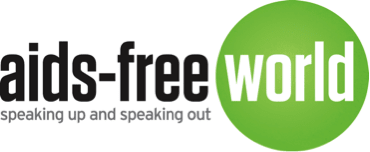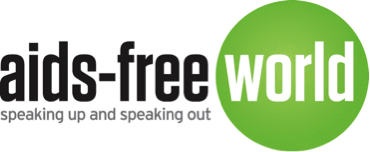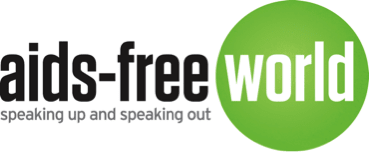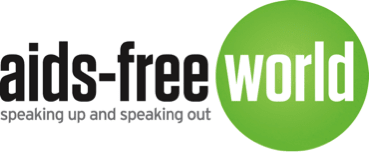Quick Quiz: HIV

How many people worldwide are currently living with HIV?
UNAIDS and the World Health Organization estimate that of the 38 million, at least nineteen per cent are not aware of their positive HIV status. That’s because, although those 7.1 million people are living with the virus, they have not been tested and received their positive diagnoses.
What percentage of people living with HIV are receiving treatment?
Of the 38 million people worldwide living with HIV, two-thirds are now receiving daily anti-retroviral therapy, or ART, to suppress the virus in their bodies and prolong their lives. Women who know their HIV status are more likely than men to be on treatment.
The remaining one-third of people living with the virus are still not receiving ART. They comprise people who don’t know that they’ve contracted the virus, as well as another group: the 18 percent of people who have received a positive diagnosis, but are not taking antiretroviral therapy due to one or more factors. These may include financial hardship (i.e., the inability to afford the cost of the drugs or transportation to a clinic), social pressure (i.e., fear of disclosing because of the stigma and discrimination so often associated with a positive HIV diagnosis), and/or structural reasons (i.e., drug stock-outs or lack of drug availability or access in their areas.)
According to the Kaiser Family Foundation, "there is growing concern about the potential impact of COVID-19 on the HIV/AIDS response in low- and middle-income countries, including on the availability of antiretroviral medicines and access to preventive services. Such disruptions in HIV/AIDS efforts are estimated to result in many more additional deaths.”
How many girls and women ages 15-24 become infected with HIV every week?
Each week, another 5,500 adolescent girls and young women between the ages of 15 and 24 contract HIV. Worldwide, the risk of acquiring HIV is twice as high for females in that age group as it is for their male peers. In sub-Saharan Africa, the crisis is especially acute for the younger half of that age cohort: five out of six new infections among adolescents aged 15–19 years occur in girls.
The female body is biologically more susceptible to HIV, particularly during adolescence, but that is not the main reason for the gender disparity. Sexual violence and intimate partner violence are major drivers. In a statement issued last week, UNAIDS warned that COVID-19 is worsening what it calls the “neglected pandemic of violence against women and girls” and simultaneously limiting their access to services for HIV, gender-based violence, and other sexual and reproductive health needs.
Which region is home to more than half of all people living with HIV?
Over half (54%) of all people currently living with HIV are in Eastern and Southern Africa, a region where nearly two-thirds of all adults living with the virus are women.
The three countries with the highest rates of HIV in the world are in Southern Africa: Eswatini, formerly known as Swaziland, has both the highest prevalence of HIV, with 27 per cent of all adults living with the virus, and one of the highest treatment coverage rates. The next greatest HIV burdens are in Lesotho (23%) and Botswana (21%.)
When measured in numbers of people rather than in percentages of populations, South Africa is the country with the largest number of adults living with HIV – seven and a half million, of whom two-thirds are women.
Along with practicing safer sex and avoiding sharing needles, what are two proven ways for people at high risk to lower their chances of becoming infected with HIV?
PrEP and PEP are abbreviations for drug therapies that can dramatically reduce the risks of acquiring HIV at two different points—one before and one after exposure.
PrEP, or pre-exposure prophylaxis, is a prevention regimen in which one of two FDA-approved daily medicines—Truvada or Descovy—is prescribed to people whose HIV status is negative, but whose risk of becoming infected is high (for example, intimate partners of people living with HIV.) PrEP can stop HIV from taking hold and spreading throughout the body.
PEP, or post-exposure prophylaxis, is a short course of HIV medicines that can prevent the virus from taking hold in the body if it’s taken within 72 hours of an incident that could result in HIV transmission. It is used in emergency situations, such as suspected exposure to HIV through a sexual assault or an accidental needle-stick injury.
Although neither PrEP nor PEP is foolproof, both prevention methods have been proven highly effective.
What is the annual cost of HIV drug treatment in Africa’s public sectors?
In 2017, a pricing agreement was brokered between governments and pharmaceutical companies for a once-a-day, generic “fixed-dose combination” of three best-in-class anti-retroviral drugs in a single pill. The negotiated cost of the HIV treatment was locked in at around US $75 per person per year for low- and middle-income countries.
Although the hard-won agreement was a breakthrough, the cost still represents an enormous burden in countries where resources are strained and many millions subsist on dollars a day.
Is there a vaccine, a cure, or a drug therapy to prevent HIV transmission?
There is still no cure or vaccine for HIV or AIDS, but drug therapy can make HIV "untransmittable." An extraordinary development nicknamed U=U is now scientifically proven: Anti-retroviral therapies are now so effective that they can reduce the “viral load” of HIV in a person’s body to such low levels that although the virus has not been eliminated, it can no longer be detected by a blood test. If that point is reached, and if the person living with HIV adheres to a daily regimen of anti-retroviral drugs to maintain that undetectable level, HIV cannot be passed on through sex.
Hence U=U, or Undetectable = Untransmittable.
You got {number correct}/{number of questions} correct answers

You got {number correct}/{number of questions} correct answers

You got {number correct}/{number of questions} correct answers
